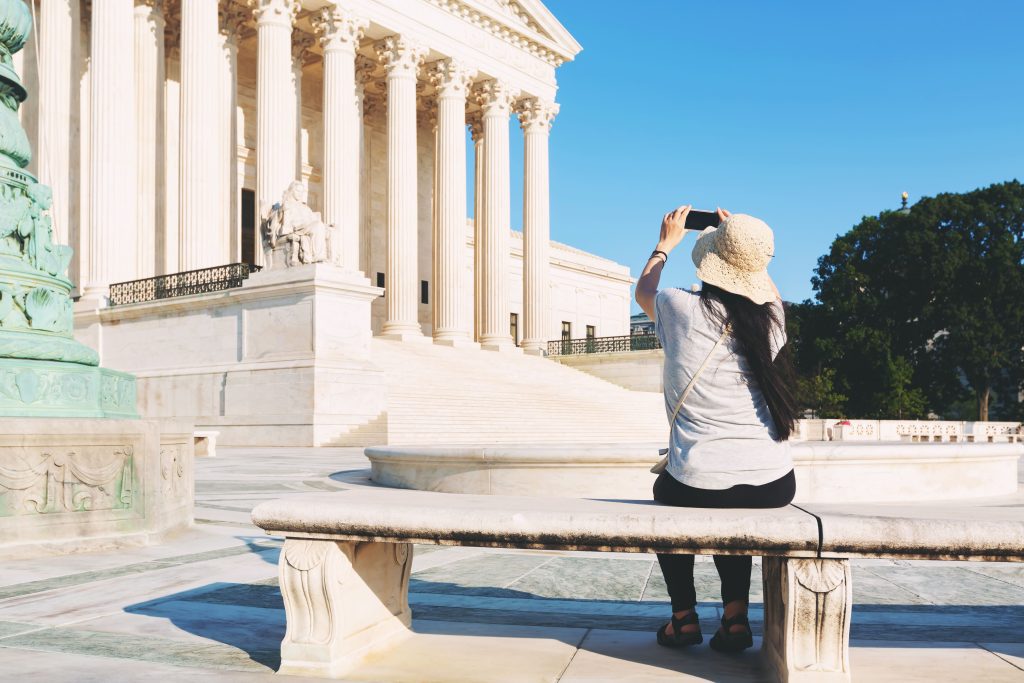How to Navigate the U.S. Student Visa Process for International Students: Tips and Requirements

If you’re an international student wondering how to navigate the U.S. student visa process for international students, this guide is here to help. We’ll cover everything from understanding the F-1 visa requirements to preparing for your visa interview, making the process clearer and more manageable.
Understanding the F-1 Visa
The F-1 visa is the cornerstone for international students aspiring to pursue their studies in the United States. As the most common type of student visa, the f 1 student visa allows foreign students to enroll in academic programs or English language courses at U.S. colleges and universities. INTO provides detailed guidance on the F-1 visa process, helping international students understand the U.S. student visa requirements and navigate through the complexities.
Before applying, it’s helpful to grasp the purpose and benefits of the F-1 visa. The F-1 visa is specifically designed for students who plan to attend SEVP-certified institutions and offers numerous advantages, including the ability to work under certain conditions and the opportunity to immerse oneself in American culture. This foundational knowledge sets the stage for a successful visa application.
What is an F-1 Visa?
The F-1 visa is a non-immigrant visa issued to international students who have been accepted by an accredited U.S. institution. To be eligible, applicants must demonstrate proof of financial funds sufficient to cover their tuition and living expenses while in the U.S. Additionally, prospective students must meet English proficiency requirements and be enrolled in an academic program or English language course approved by the Department of Homeland Security through the Student and Exchange Visitor Program (SEVP).
This visa allows students to temporarily reside in the U.S. for the duration of their academic program and is categorized under student visas. Applicants must have a valid I-20 form from their SEVP-certified school, detailing their program and financial situation.
Unlike the M visa, which is for vocational studies, the F-1 visa caters specifically to academic endeavors, making it the ideal choice for those pursuing higher education in the U.S. Many students opt for f 1 visas to achieve their academic goals.
Benefits of the F-1 Visa
An F-1 visa offers several significant benefits. It not only allows international students to access high-quality education in the U.S. but also provides the opportunity to gain practical work experience through on-campus employment and Optional Practical Training (OPT) programs. Moreover, F-1 visa holders can immerse themselves in American culture, enhancing their global perspective and expanding their professional network.
Such experiences are invaluable for personal growth and career development.
Preparing for Your F-1 Visa Application
Thorough preparation is crucial for a successful F-1 visa application. Each step requires meticulous attention to detail and brings you closer to your dream of studying in the U.S. From acceptance by an SEVP-certified school to gathering the necessary documents, understanding the process thoroughly will save time and reduce the risk of application denial.
Acceptance by SEVP-Certified School
The initial step is obtaining acceptance from an SEVP-certified school. Once accepted, you will receive a Form I-20 from the school’s designated school official (DSO), which is a mandatory document for your visa application.
Maintaining this document throughout your stay in the U.S. is important as it verifies your student status.
Financial Proof and English Proficiency
Demonstrating sufficient financial resources is a critical component of the F-1 visa application. You need to provide proof of funds to cover your tuition and living expenses for the duration of your stay. This typically involves bank statements, financial affidavits, or proof of relationship with a sponsor, if applicable. Having these documents in order will help avoid delays or denials.
In addition to financial proof, meeting the English proficiency requirements set by your chosen institution is necessary. This may involve standardized test scores like TOEFL or IELTS, or enrolling in English courses if you do not meet the minimum scores. Financial stability and language proficiency are fundamental to securing your F-1 visa.
Required Documents
Gathering the necessary documents is a vital step in the F-1 visa application process. Essential documents include a valid passport, a completed Form DS-160, your Form I-20, and a visa application fee payment receipt. Your passport must be valid for at least six months beyond your intended period of stay.
Additionally, be prepared to provide any other requested documents to support your application.
Completing the F-1 Visa Application
Completing the F-1 visa application involves several important steps, each requiring careful attention. Starting the process well in advance of your planned arrival is crucial, as it can take several weeks or even longer to complete.
Accurately filling out and submitting all forms on time will pave the way for a smooth application experience.
Paying the SEVIS Fee
The SEVIS fee payment, a critical part of the F-1 visa application, must be paid before you can apply for your visa. The SEVIS fee, which is $350, must be paid before you can apply for your visa. This fee supports the Student and Exchange Visitor Program (SEVP) and helps document your intention to study in the U.S.
Pay through the SEVP Portal and retain the receipt as proof for your application.
Filling Out Form DS-160
Form DS-160 is the online non-immigrant visa application form that must be completed for the F-1 visa. Form DS-160 collects your personal information, travel history, and details about your intended stay in the U.S.
Once completed, you must print the confirmation page and bring it to your visa interview.
Scheduling and Preparing for the Interview
After completing Form DS-160, the next step is to schedule your visa interview at a U.S. Embassy or Consulate in your home country. Typically, applicants aged 14 to 79 are required to attend an interview in person.
To prepare for the interview, practice answers to common questions and gather all necessary documents, including proof of financial resources and your Form I-20.
Attending the F-1 Visa Interview
The visa interview is a crucial step in the F-1 visa application process. The interview primarily seeks to verify your intent to study in the U.S. and ensure you meet all U.S. legal requirements. During the interview, you will undergo digital fingerprint scans and answer questions posed by a consular officer.
Common Interview Questions
During the F-1 visa interview, expect questions about your choice of university, financial plans, and future intentions. Be prepared to explain why you chose your specific institution and how you plan to support yourself financially while studying in the U.S.
Clear and honest answers will demonstrate your genuine intent to study and return to your home country post-graduation.
Documents to Bring
It’s essential to bring the correct documents to your visa interview. These include your valid passport, Form I-20, financial proof, and any additional documents requested by the embassy or consulate.
Having all required documents will help avoid delays or complications during the interview.
Tips for a Successful Interview
Succeeding in your visa interview involves practicing answers to potential questions and familiarizing yourself with your application details. Be honest about your travel history and ensure you understand the specifics of your study program.
Dressing professionally and arriving on time can positively impact the consular officer’s impression.
Post-Interview Steps
After the visa interview, there are important steps to follow, whether your visa is approved or denied. Knowing these steps ensures compliance with U.S. immigration laws and prepares you for subsequent actions.
Receiving Your Visa
If your F-1 visa is approved, you will receive your passport with the visa stamp. Review visa processing times to anticipate any delays. Keep copies of all submitted documents for your records, and retain your Form I-20 for entry into the U.S. and other activities.
Handling Visa Denials
If your F-1 visa application is denied, you will receive a written explanation detailing the reasons for denial. Common reasons include insufficient information or failure to demonstrate strong ties to your home country.
In certain cases, reapplication or filing a waiver of ineligibility might be an option.
Maintaining Your F-1 Visa Status
Maintaining your F-1 visa status is crucial for legally staying in the U.S. while studying. This involves adhering to university regulations, maintaining full-time enrollment, and keeping in regular contact with your designated school official (DSO).
Failing to maintain your status can result in serious consequences, including visa revocation and difficulty reentering the U.S.
Full-Time Enrollment
Maintaining your F-1 visa status requires full-time enrollment in your academic program. This typically means taking a full course load each academic term.
Notify your International Student advisor if you face challenges in your studies.
Working on an F-1 Visa
F-1 visa holders are allowed to work primarily on-campus and must adhere to specific work authorization rules. During academic terms, you can work up to 20 hours per week on-campus and full-time during academic breaks if permitted. Unauthorized off-campus work can lead to severe consequences, including visa revocation.
Reporting Changes
Report any changes in your personal or academic status to your DSO promptly. Changes could involve a new address, academic program alterations, or personal circumstances affecting your status. Failing to report these changes can jeopardize your ability to remain in the U.S. legally.
Extending Your Stay and Other Options
If you wish to extend your stay in the U.S. after completing your language training program, there are several options available.
Understanding these options and taking timely action ensures compliance with visa regulations.
Program Extensions
Students unable to complete their program on time should apply for a program extension before their Form I-20 expiration date. Applications must be submitted at least 1-2 months before the current I-20 expires and must demonstrate valid academic or medical reasons for the extension.
OPT and STEM OPT Extensions
One of the significant advantages of the F-1 visa is the opportunity to apply for Optional Practical Training (OPT) and curricular practical training, which allows students to gain practical work experience in their field of study for up to 12 months after graduation. For those in STEM fields, the OPT can be extended for an additional 24 months, providing a total of up to three years of work experience in the U.S.
Applying for this extension on time and adhering to specific eligibility criteria is necessary.
Summary
Navigating the U.S. student visa process may seem complex, but with careful preparation and understanding, it becomes an achievable task. From understanding the F-1 visa and its benefits to preparing your application and attending the visa interview, each step is crucial for securing your opportunity to study in the U.S. Following the interview, maintaining your visa status and exploring options for extending your stay ensure a smooth and enriching educational journey.
In summary, the key to a successful F-1 visa journey lies in meticulous preparation, adherence to regulations, and proactive communication with your designated school official. By following this comprehensive guide, you can confidently navigate the visa process and focus on achieving your academic and professional goals in the United States. Embrace this opportunity to expand your horizons and make the most of your international education experience.
Frequently Asked Questions
What is an F-1 visa?
An F-1 visa is designed for international students enrolled in academic or English Language Programs at U.S. colleges and universities. This visa allows them to pursue their education while in the United States.
How long can F-1 students remain in the U.S. after completing their academic program?
F-1 students can remain in the U.S. for up to 60 days after completing their academic program. This grace period allows for necessary preparations before departure.
What must F-1 visa applicants demonstrate regarding their home country?
F-1 visa applicants must demonstrate strong ties to their home country through evidence such as job offer letters, financial assets, bank accounts, and family connections. Establishing these ties is essential for proving intent to return after their studies.
Where should applicants apply for their F-1 visa?
Applicants should apply for their F-1 visa at the U.S. Embassy or Consulate that has jurisdiction over their permanent residence. This ensures the application is processed efficiently and correctly.
What happens if an F-1 visa application is denied?
If an F-1 visa application is denied, you will receive a detailed explanation of the reasons for the denial, often related to insufficient documentation or lack of ties to your home country. It is essential to address these concerns before reapplying.





